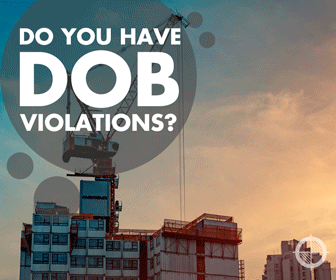
The Height of Safety: LL 147 Will Change the Definition of Major Buildings
An upcoming change to the definition of “major buildings” will have major ramifications for thousands of New York City properties by the end of the year. Read up on the details to understand how it may affect you.
Under current NYC building code laws, major buildings are defined as, “an existing or proposed building 10 or more stories or 125 feet or more in height, or an existing or proposed building with a building footprint of 100,000 square feet or more regardless of height.”
However, as Local Law 147 goes into effect on December 11, 2024, this definition will expand to include buildings that are 7 or more stories, or 75 feet or more in height.
Currently, only major buildings are subject to NYC’s site safety requirements, but soon this category will include buildings constructed without site safety in mind. This will introduce a variety of new hurdles for smaller contractors, who may be unfamiliar with the complicated process of obtaining approvals for site safety plans and tenant protection plans.
Play it Safe — What Are the Site Safety Requirements?
According to the Department of Building’s (DOB) annually released construction safety report, fatal accidents in construction declined by 36% in 2023. However, non-fatal injuries have steadily increased by 38% over the past 3 years, due in large part to the return of construction after COVID-19. However, appropriate safety measures are also a concern; most of these incidents have occurred on low-rise construction sites, prompting officials to expand the number of buildings that qualify for restrictions.
So, what are the site safety requirements? That depends on the scope of work — new buildings, full demolitions, and vertical/horizontal enlargements require both a Construction Superintendent (CS) as well as a Site Safety Manager (SSM) or Site Safety Coordinator (SSC), whereas smaller scopes are less stringent. For example, alteration work involving more than 50% of the gross floor area of the building requires only a CS, while partial demolitions involving less than 50% of the gross floor area require only a SSM or SSC. The code requirements for safeguards are highly variable and specific to the construction project, so it’s important to reach out to a professional who can determine the best course of action for your circumstances.
To make matters more complicated, as of 1/2/24, Construction Superintendents may no longer be issued permits if they are already designated on 3 active permits, a change from the previous limit of 5 active permits at a time. While this restriction may ensure that your project receives undivided attention, it may also make it more difficult to find an available CS.
Permits issued and requested before 12/11/24 will also not be affected by the change. However, any job filed before the deadline that has not been requested or issued the following initial permits, will be required to comply:
- General Construction (GC)
- Structural (ST)
- Foundation (FO)
- Support of Excavation (SE)
- Earthwork (EA)
Failing to obtain an approved site safety plan can push your project back months, so it’s crucial to contact professionals who will ensure your timeline runs smoothly. For assistance with your building code and zoning concerns, reach out to Outsource Consultants, Inc., experts in the field for 30 years and counting.
Resources
- Local Law 147 of 2021: New Definition of Major Building – 7 or More Stories or 75 Feet in Height
- 2022 Construction Codes: Site Safety Requirements for Major Building Site Safety Projects








